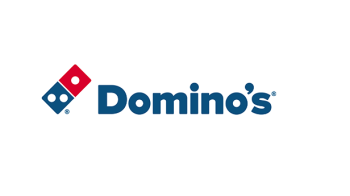Search: Principles for creative best practice
-
Principle 3. Consider how your PPC and SEO strategies work together
-
Principle 5. Take advantage of creative innovations and new formats
Principle 1. Think beyond the query
Paul Kasamias, Head of Performance Media, Starcom/Performics
Search advertisers today are spoilt with a plethora of audience signals that can be used to better inform their creative decisions, meaning that a successful advert is based on much more than just the link between the creative messaging and the query or the landing page.
Device, location and a user’s previous online behavior should all be used to target users at the right time with the right message. For instance, a searcher’s previous interactions with your website is a strong indicator of where they are in the conversion funnel, and a “buy now” message might work better than an informative “find out more” creative if the searcher is deemed to be in-market for your product/service.
However, tailoring creative doesn’t need to be time consuming – Google offer many solutions to automate this, such as device preferred creative and IF functions. The most important thing to remember is that there is not a one-size-fits-all approach to copy writing, and in fact developing a test and learn approach around these audience signals is key to optimising performance.
Principle 2. Test and iterate to optimise creative
Peter Giles, Agency Manager, Google
Testing and iterating your creative helps optimise your advertising. Here’s four tips to help you find success:
- Set up a campaign draft and experiment to test changes to a campaign.
Why: You can learn about your users’ preferences and improve your performance by honing ad text, especially your headlines.
- Add 3-5 ads per ad group.
Why: Multiple versions give you more options to succeed in each auction.
- Focus your testing efforts on high-value campaigns.
Why: Prioritising your testing efforts on the places that matter most will help you see the biggest improvements from testing.
- Optimise your ad rotation to prefer the best performing ads.
Why: Ads optimised to drive clicks or conversions can improve your competitiveness in auctions.
Principle 3. Consider how your PPC and SEO strategies work together
Edward Cowell, Partner SEO & Performance Content, MediaCom
Whilst paid and organic search are very different channels, the agility and control of paid search advertising works well in collaboration with the breadth and reach of organic search engine optimisation.
• Align your keyphrase strategy:
- Optimise the website to ensure the broadest coverage for keyphrases your users may be searching for.
- Understand competitor paid search bidding activity.
- Use paid search to tactically control which keyphrases you target, where you are positioned and where on your website you land your users - such as positioning above competitors who are bidding on your brand terms.
• Use paid search to promote creative messaging in the search results page that would not be achievable via SEO such as time restricted or customer targeted offers, ad extensions or different ad types such as product listing ads (PLA’s).
• Ensure your paid search advert call to actions and organic page title messaging correctly represent the content or experience users can expect on the landing page.
• Leverage the website engineering and onsite content focus of the SEO team to enhance the content and user experience.
- Use paid search keyphrase demand and conversion data to inform content creation or optimisation where quality scores and conversion rates are low.
- Optimise your web pages to load quickly. Page speed affects not only your onsite user experience but also your search ad quality score and mobile organic rankings.
Principle 4. Automate where possible
Peter Giles, Agency Manager, Google
Automation is a useful way to save time and energy. Here are some tips that help you do just that:
- Use keyword insertion and ad customisers if you have a lot of ads to maintain.
Why: You can tailor your creative to a user’s search while reducing your management overhead, including in your URL navigation fields.
- Use IF functions to tailor your message in your text ad when a condition has been met.
Why: This makes your ads tailored to each search and more relevant to potential customers. Unlike ad customisers, IF functions do not use a feed.
- Use dynamic search ads to find customers searching on Google for precisely what you offer.
Why: Save time with no need to map keywords, bids and text; show relevant, dynamically generated headlines with your ads.
Case study: With dynamic search ads, First for Women cuts cost per acquisition by 62%
Principle 5. Take advantage of creative innovations and new formats
Peter Giles, Agency Manager, Google and Edward Cowell, Partner SEO & Performance Content, MediaCom
Creative innovations vary depending on if you're talking about PPC or SEO. For PPC:
- Tie creatives to your keywords; craft messaging that focuses on user benefits; avoid generic language and use specific calls to action.
Why: Users respond to ads that speak to their needs and tend to engage with ads that appear most relevant to their search. People come to Google for answers, ad copy with a question in the headline often underperforms. Generic calls to action often show decreased engagement with ads.
- Focus on your headlines
Why: The content and quality of your headlines matters and will determine how well your ads perform.
Read more about writing compelling, genuine ad copy.
- Review your Ad Suggestions
Why: To help improve performance, a combination of human review and machine learning is used to create high-quality ad suggestions. Save time in creating variations of your existing ads and take advantage of free optimisation of ad copy.
- Stay up-to-date on new formats for your category.
Why: Google regularly introduces new ways to reach your target customers through search ads. Examples of category specific formats beyond text ads include shopping ads and hotel ads.
- Implement all Ad Extensions that make sense for your business, trying for at least four.
Why: Extensions add useful business data below your ad – locations, additional links, prices and more. Ads with multiple extensions often perform better than ads with only one extension.
SEO is very different. For SEO:
- Use Schema & JSON-LD to markup your data so that search engines can show the correct information in search results such as in Google Knowledge Graph, rich snippets and other structured data based results.
Why: Organic search content is increasingly trending towards information-rich results, from pricing and product information to restaurant menus and business details such as telephone numbers.
- Use new open source coding formats such as Accelerated Mobile Pages (AMP) ampproject.org to make load times of content faster.
Why: Faster load times particularly on mobile devices correlate with a better user experience and higher conversions.



Topics
Related content
Native distribution: Principles for creative best practice
Learn moreThe importance of decoupling display KPIs from search
Learn moreHumanising Search
Learn moreThe future of search lies in the power of suggestion
Learn more
Fast forward to 2030 with Futurescape
An in-depth exploration of the attitudes, innovations and media shifts that will shape the years ahead and redefine how we advertise by the turn of the decade



